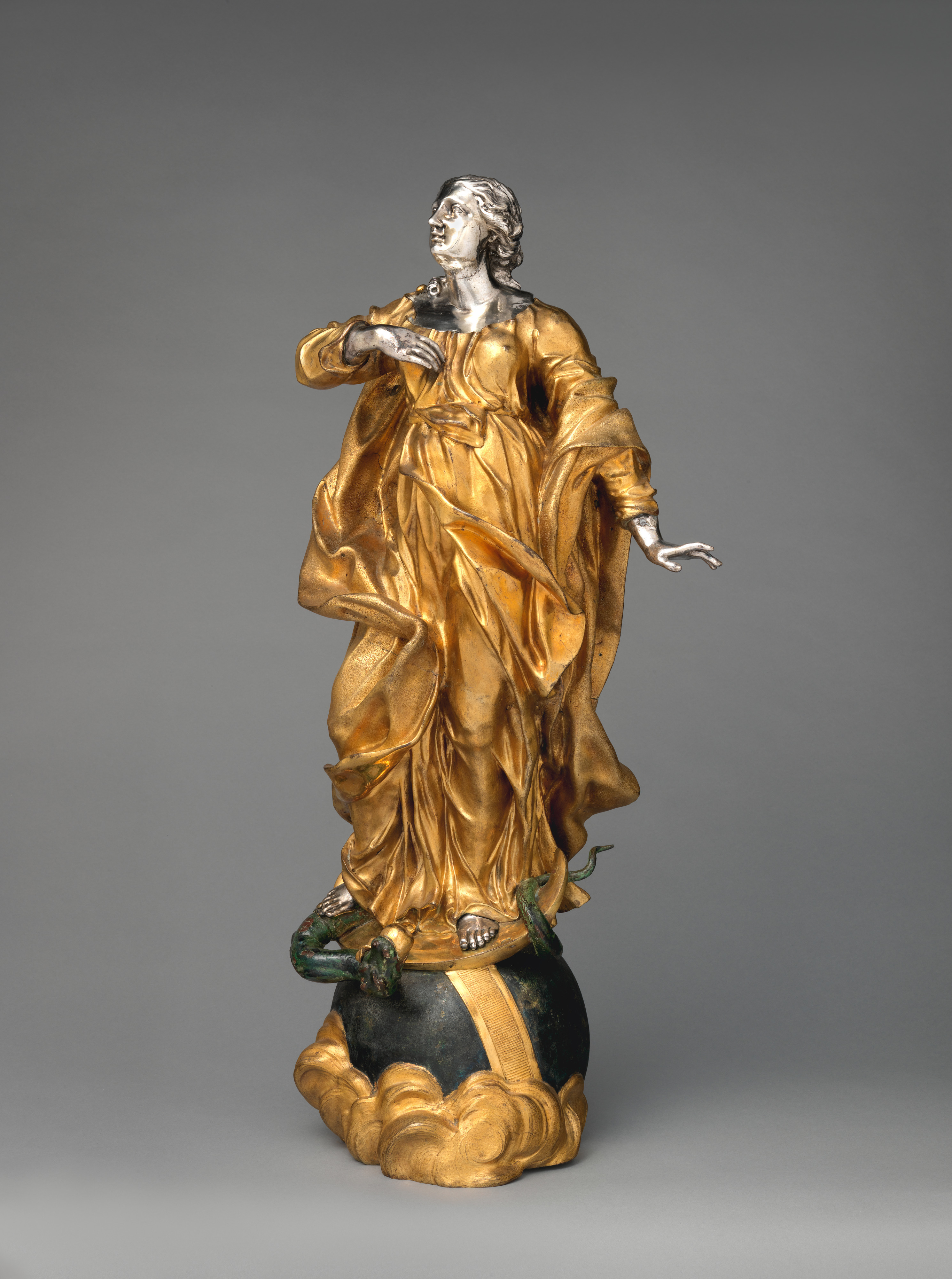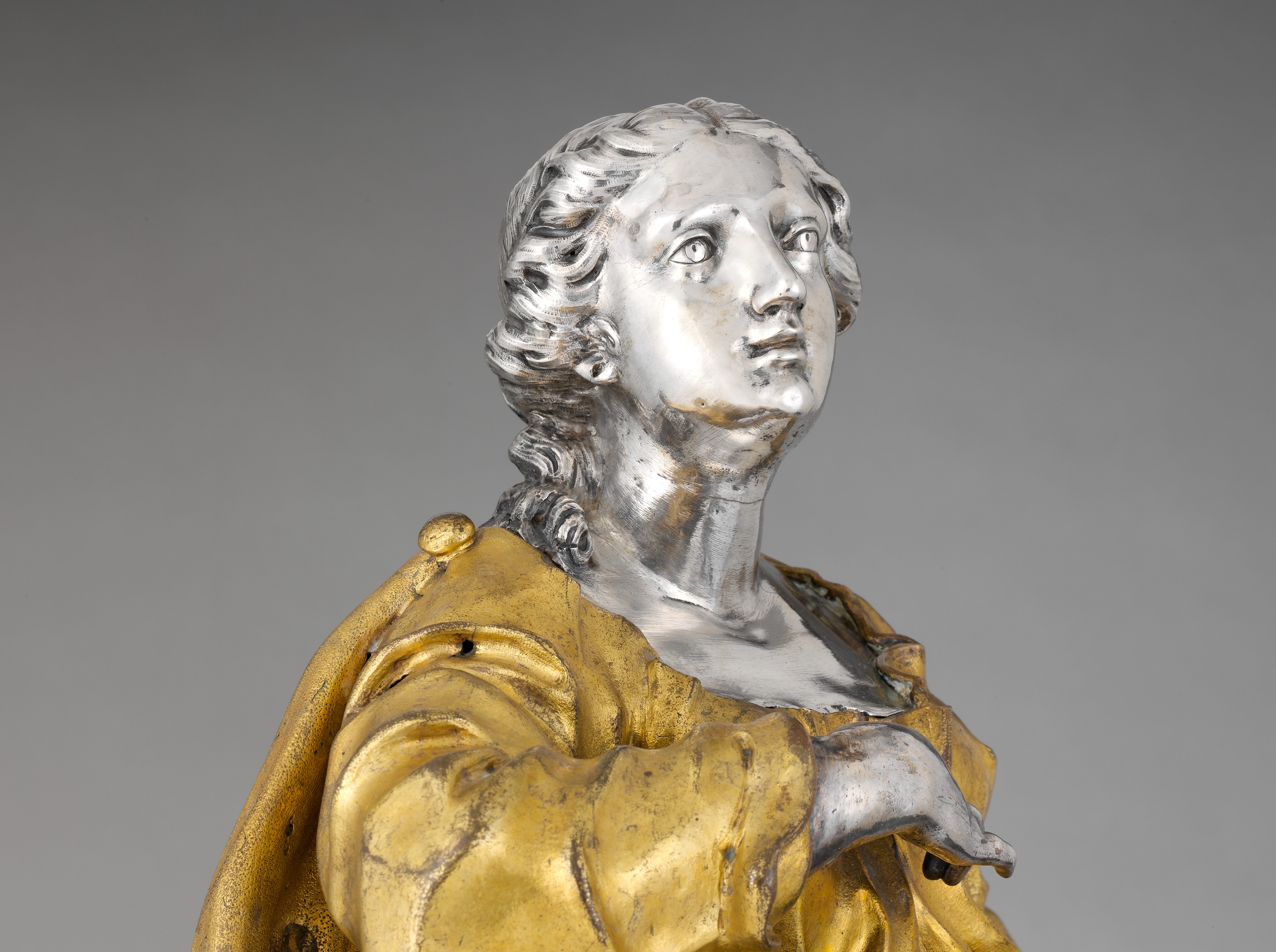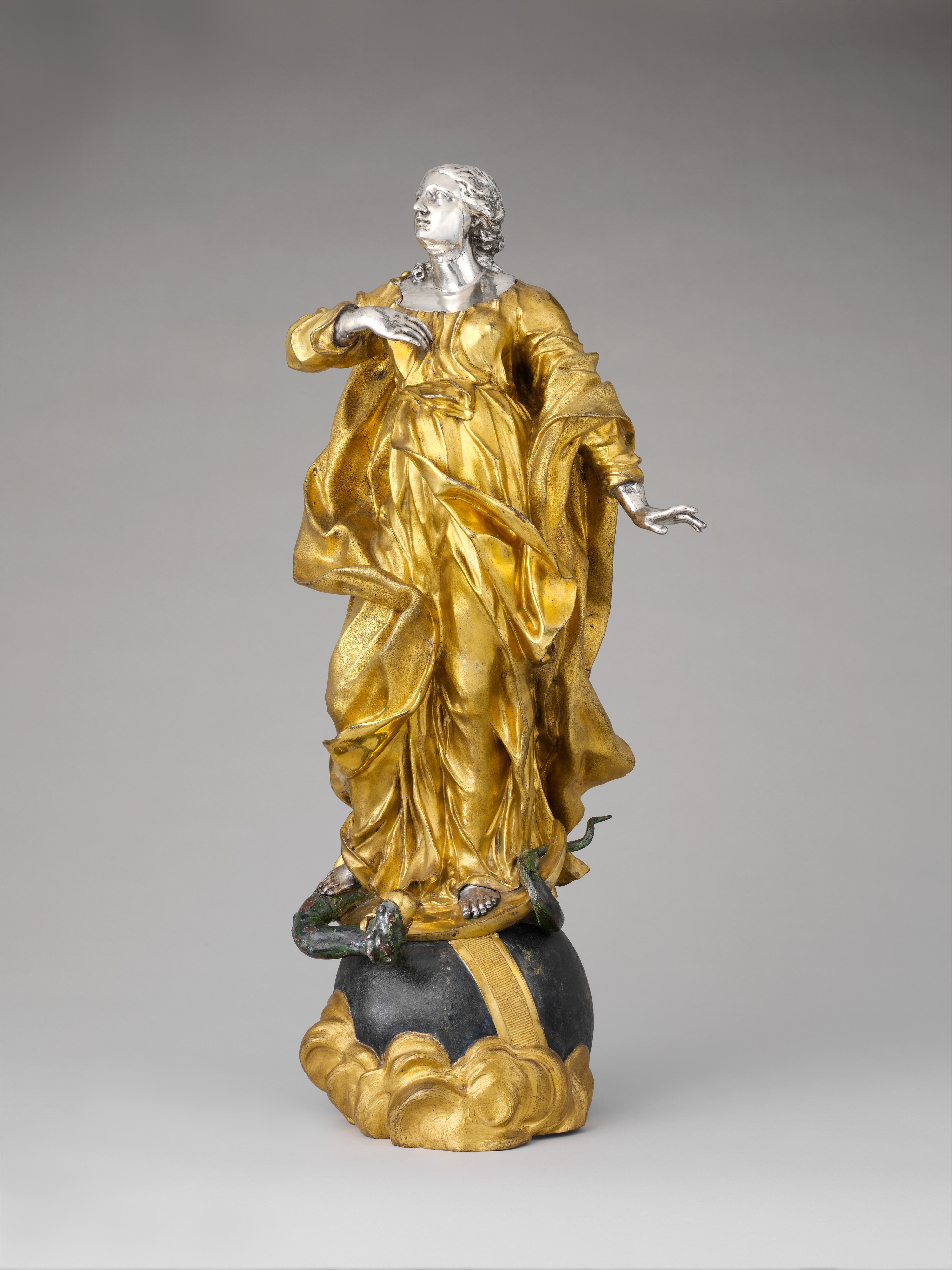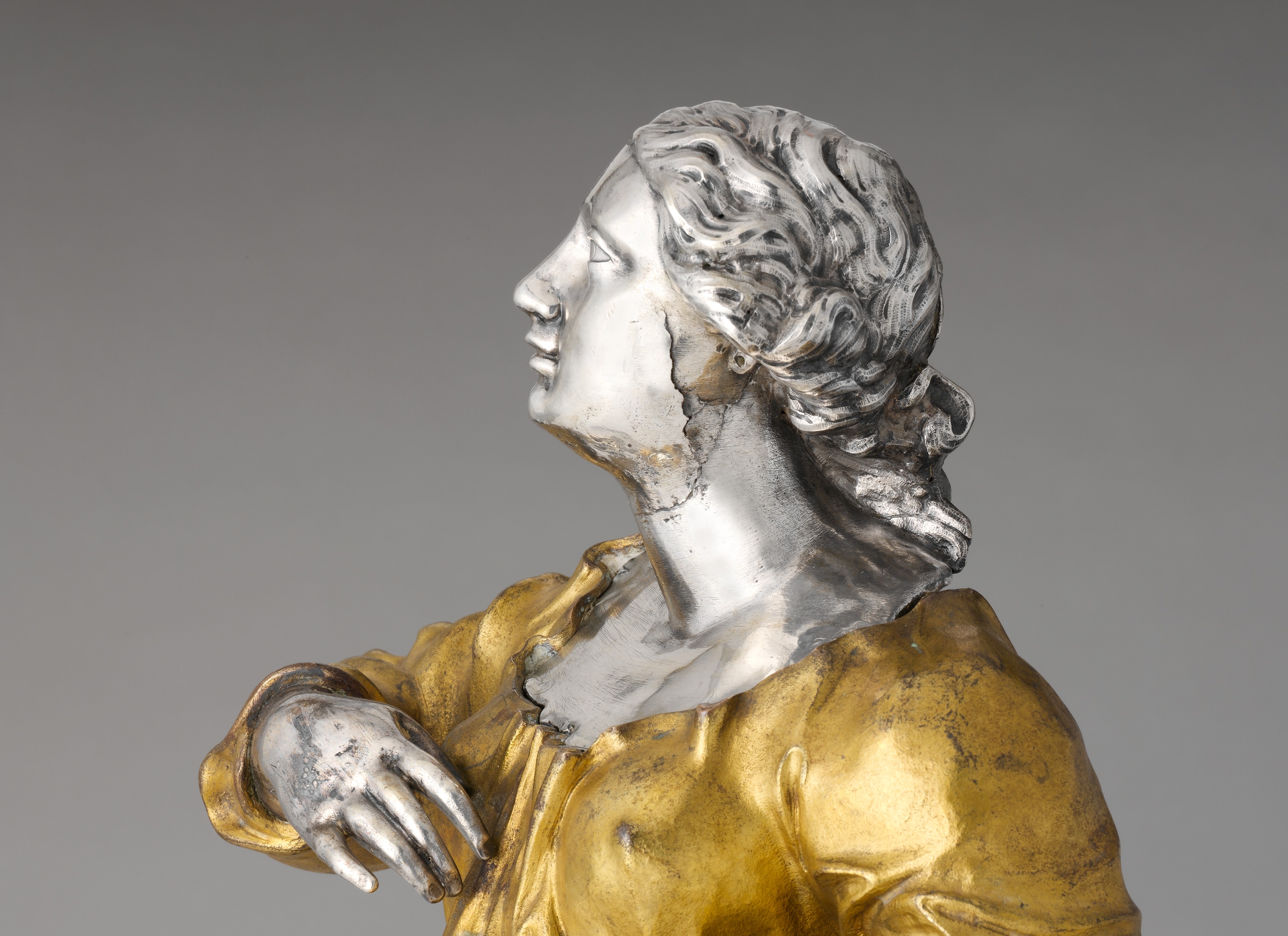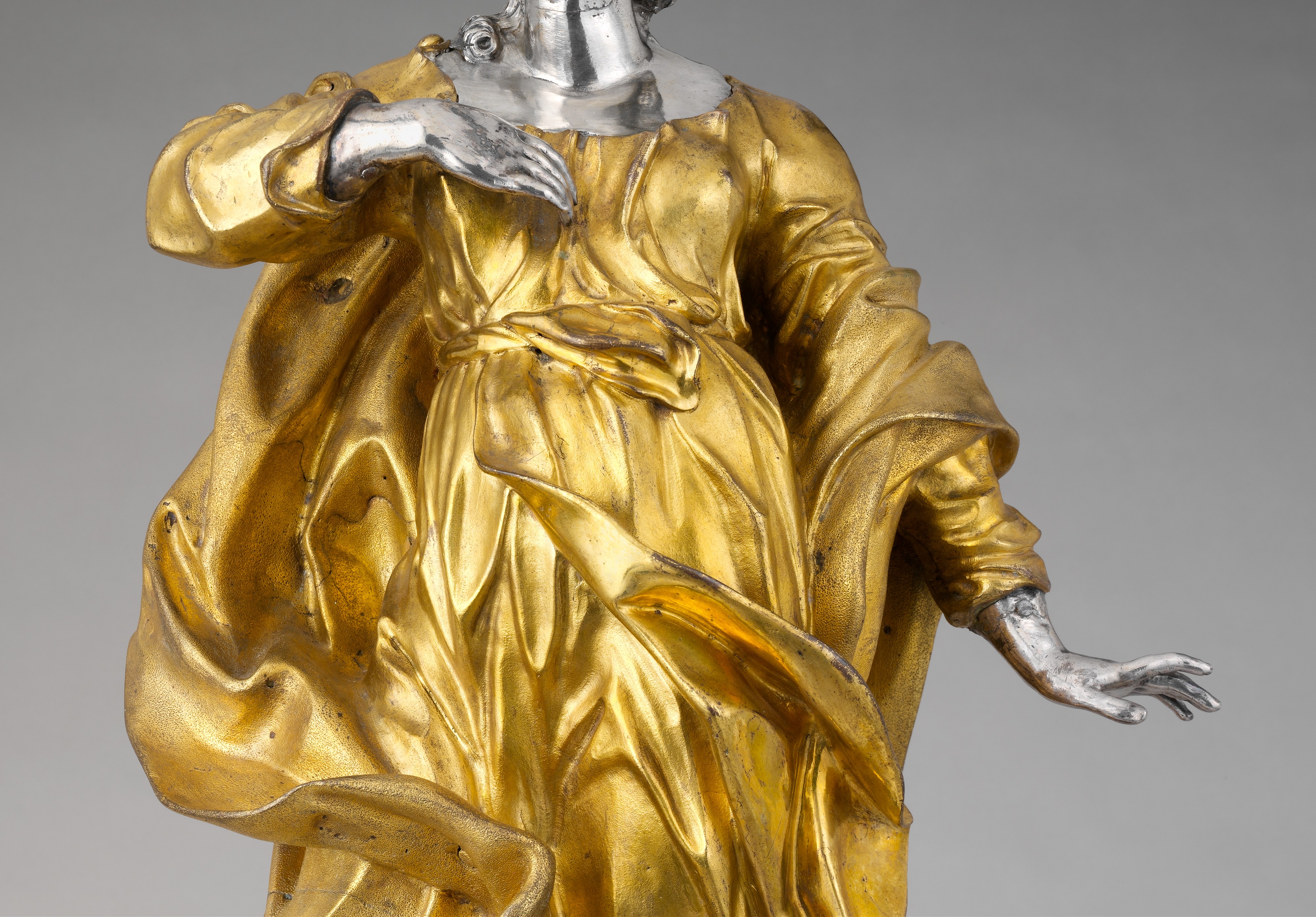Virgin of the Immaculate Conception
Probably after a model by Lorenzo Vaccaro Italian
Modeled in the round, the statuette presents an alluring combination of metals—silver and gilt bronze. The Virgin stands on a crescent moon around which coils a serpent with a golden apple in its mouth. The globe base floats on a cloud. The figure’s pose is piously restrained, her hand pointed primly at her breast. She tramples the serpent’s body under her right foot, thus signaling that she is the New Eve.
The silver head, hands, and feet were cast separately, and the bronze elements were thinly cast in sections joined by an internal ring. A modern T-shaped rod holds the statuette together. The head contains holes, made most likely for the purpose of attaching a twelve-star crown and a pair of earrings. At the nape of the neck is a small cavity, probably meant to hold a coil of hair. Traces of green paint cover the globe and parts of the serpent’s scales, ears, and snout. Despite some damage common to such artifacts, the mantle shows a skillful differentiation among stippled, chiseled, matte, and burnished surfaces.
When auctioned at Christie’s in 1990, the work was tentatively ascribed to the circle of Lorenzo Vaccaro. After it entered The Met in 1992, Olga Raggio catalogued it as Roman, possibly cast after a model by Gian Lorenzo Bernini. But the decorous folds of the Virgin’s mantle, pinned at the right shoulder, and the gracious curves of her dress bear stronger affinities with late seventeenth-century Neapolitan metalwork than with the exuberantly billowing drapery of the Roman Baroque. On stylistic grounds, in 2008 I also attributed the Virgin to Vaccaro. Active in the last quarter of the seventeenth and beginning of the eighteenth century, this versatile sculptor worked in different mediums and supplied designs to skilled silversmiths and bronze founders. The fusion of materials seen in our statuette, though common enough in Italian sculpture, was particularly favored in Naples in Vaccaro’s day. The firm structure of the head, the noble line of the eyebrows, the well-chased eyes and curly hair, and the scooped-out drapery are comparable to his documented metalwork.
The iconography of the Virgin of the Immaculate Conception as the New Eve was popular in the Baroque period, particularly among Spanish patrons, when Naples was the capital of a vice-kingdom and the center of considerable sculptural production intended for Spain. The city also played a crucial artistic and political role in the thorny dispute over the doctrine of the Virgin of the Immaculate Conception. Our figure may have been cast by a Neapolitan silversmith, very likely after a model by Vaccaro, for a Spanish patron. Its dimensions are significant, as several Neapolitan statuettes of the same subject composed in a variety of materials are recorded in documents in both Naples and Spain.[1] While a conspicuous number in polychromed wood are extant, very few in metal survive. The Met’s statuette is an exemplar of that production.
-PD’A
Footnotes
(For key to shortened references see bibliography in Allen, Italian Renaissance and Baroque Bronzes in The Metropolitan Museum of Art. NY: The Metropolitan Museum of Art, 2022.)
1. See D’Agostino 2008, pp. 125–26.
Due to rights restrictions, this image cannot be enlarged, viewed at full screen, or downloaded.
This artwork is meant to be viewed from right to left. Scroll left to view more.


